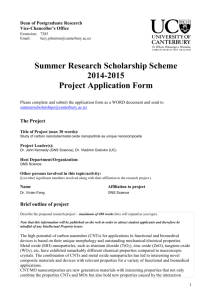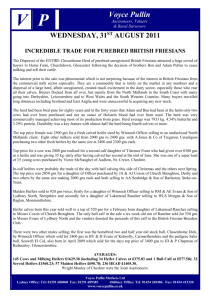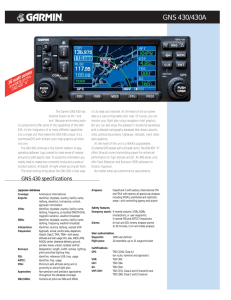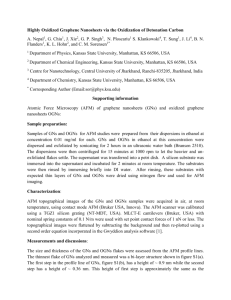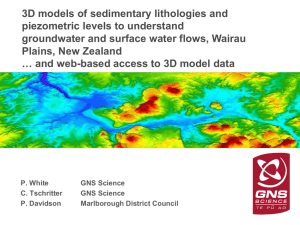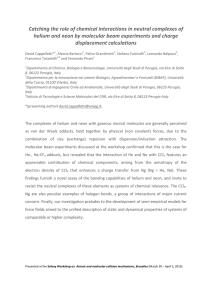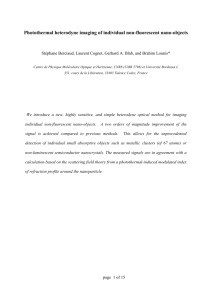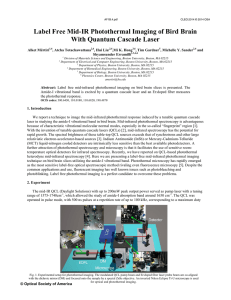Locandina - Università degli Studi di Milano
advertisement
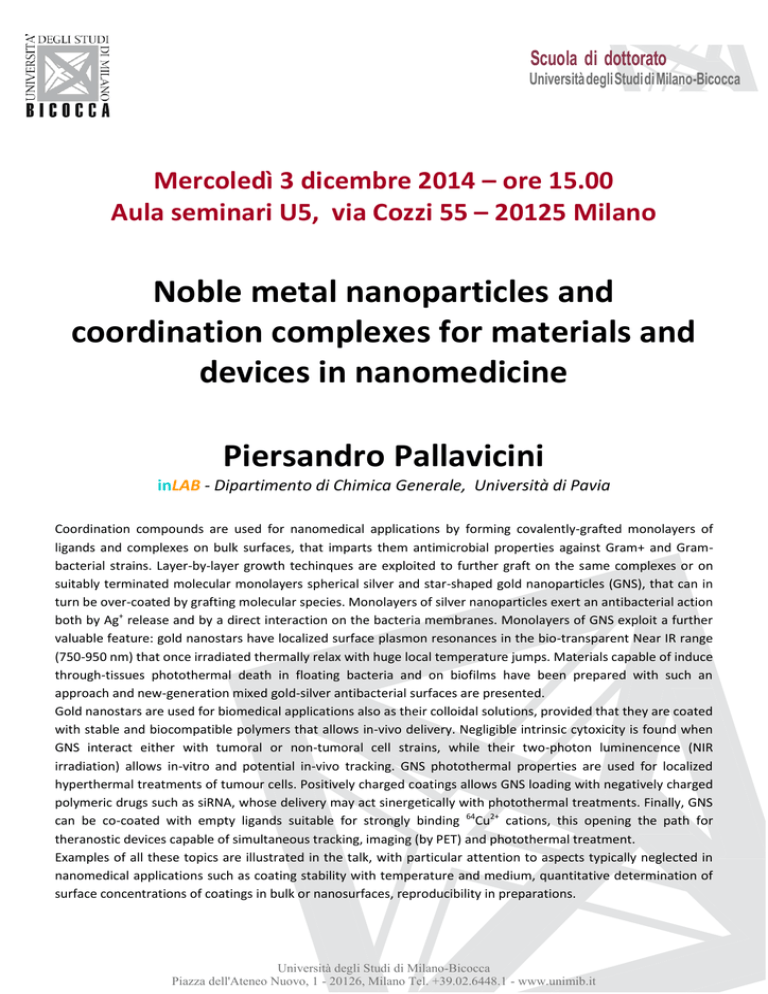
Scuola di dottorato Università degli Studi di Milano-Bicocca Mercoledì 3 dicembre 2014 – ore 15.00 Aula seminari U5, via Cozzi 55 – 20125 Milano Noble metal nanoparticles and coordination complexes for materials and devices in nanomedicine Piersandro Pallavicini inLAB - Dipartimento di Chimica Generale, Università di Pavia Coordination compounds are used for nanomedical applications by forming covalently-grafted monolayers of ligands and complexes on bulk surfaces, that imparts them antimicrobial properties against Gram+ and Grambacterial strains. Layer-by-layer growth techinques are exploited to further graft on the same complexes or on suitably terminated molecular monolayers spherical silver and star-shaped gold nanoparticles (GNS), that can in turn be over-coated by grafting molecular species. Monolayers of silver nanoparticles exert an antibacterial action both by Ag+ release and by a direct interaction on the bacteria membranes. Monolayers of GNS exploit a further valuable feature: gold nanostars have localized surface plasmon resonances in the bio-transparent Near IR range (750-950 nm) that once irradiated thermally relax with huge local temperature jumps. Materials capable of induce through-tissues photothermal death in floating bacteria and on biofilms have been prepared with such an approach and new-generation mixed gold-silver antibacterial surfaces are presented. Gold nanostars are used for biomedical applications also as their colloidal solutions, provided that they are coated with stable and biocompatible polymers that allows in-vivo delivery. Negligible intrinsic cytoxicity is found when GNS interact either with tumoral or non-tumoral cell strains, while their two-photon luminencence (NIR irradiation) allows in-vitro and potential in-vivo tracking. GNS photothermal properties are used for localized hyperthermal treatments of tumour cells. Positively charged coatings allows GNS loading with negatively charged polymeric drugs such as siRNA, whose delivery may act sinergetically with photothermal treatments. Finally, GNS can be co-coated with empty ligands suitable for strongly binding 64Cu2+ cations, this opening the path for theranostic devices capable of simultaneous tracking, imaging (by PET) and photothermal treatment. Examples of all these topics are illustrated in the talk, with particular attention to aspects typically neglected in nanomedical applications such as coating stability with temperature and medium, quantitative determination of surface concentrations of coatings in bulk or nanosurfaces, reproducibility in preparations. Università degli Studi di Milano-Bicocca Piazza dell'Ateneo Nuovo, 1 - 20126, Milano Tel. +39.02.6448.1 - www.unimib.it
